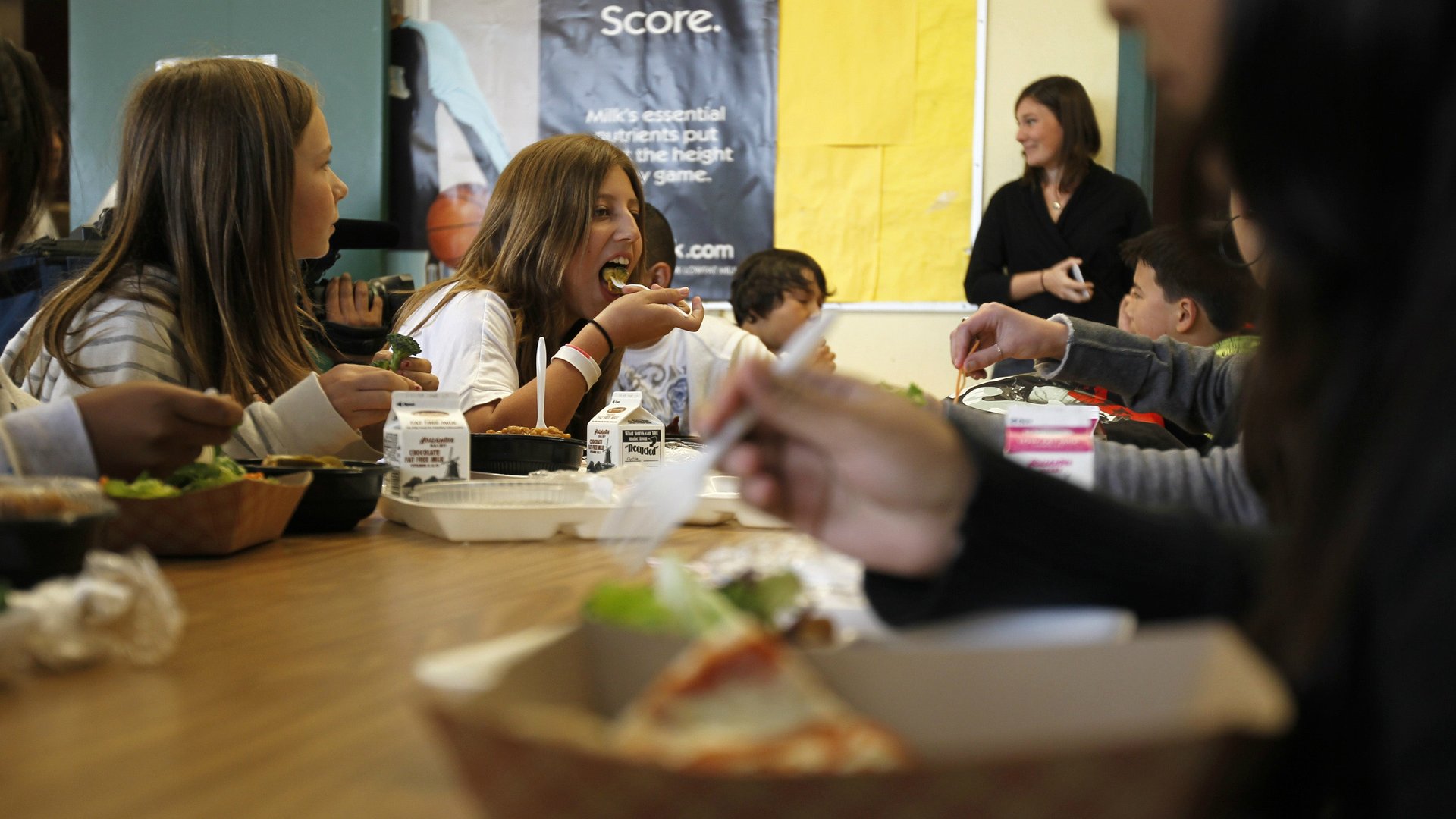The best trick to make kids eat more fruits and veggies at school, according to psychologists
Stealth nutrition is all about sleight of hand—the magic is convincing children who typically might eschew a vegetable to take a bite.


Stealth nutrition is all about sleight of hand—the magic is convincing children who typically might eschew a vegetable to take a bite.
To do that, psychologists are working to find creative ways to up the intake of healthier foods among US children. That includes using hunger to their advantage, and attracting attention with bright colors and more prominently displaying fruits and veggies over less healthy food options.
Those psychological tricks are perhaps most important in the US, where a third of teenagers are overweight and 18% are obese, according to the US Department of Health and Human Services.
Use hunger to your advantage
Think about the average dinner plate, with an main course being orbited by side items. Researchers at the University of Minnesota guessed that despite the general motivation to eat, there are no cues as to what food item to tackle first.
“For vegetables, their mere presentation in a multi-food context may do little to motivate intake because people opt instead to consume more of the better-liked items,” the scientists hypothesized. So what might happen if fruits and vegetables are put before hungry children before anything else?
With that question in mind, the researchers went to an elementary school cafeteria that serves about 800 students per day. Researchers were mindful about how many carrots were picked up by students, who had to wait to be called up, when presented as a typical item in the line. (Cafeteria workers there told the research team that raw mini-carrots were a “mildly liked” vegetable, making them a good candidate for use in the experiment.)
Three months later, the researchers returned. This time, when students filed into the cafeteria there were small cups of carrots at their tables, where they could be eaten before entering the line. The result was a 430% increase in carrot consumption.
“Less than 12% of the children here spontaneously chose carrots from the line on the control day, indicating that the carrots were clearly not a highly preferred food,” the researchers wrote. “Regardless, our intervention still
Two years later the same team went to the same school and carried out a similar experiment—giving students small cups of broccoli to eat while standing in the lunch line. “This shows that cafeterias can continually benefit from our intervention strategy, but it requires a permanent change to cafeteria procedures,” they wrote.
There are a couple more tricks that can be used to make fruit and veg more appealing to children.
Researchers have also found children are eating more fruits and vegetables when they are presented as bite-sized slices, served up in colorful packaging, and even when they’re given wacky names (such as “turbo tomatoes”). One study out of Cornell University, for instance, found that putting colorful character stickers on apples often helped persuade children to take a bite.
In April 2016, the Baltimore Sun reported several Maryland school cafeterias were participating in a program that would get more fruits and vegetables in front of students by offering them in colorful, prominent salad bars. It worked for those schools and the same idea has worked elsewhere. A researcher with Arizona State University told the Wall Street Journal (paywall) that a more prominent salad bar increased fruit and vegetable consumption by as much as five times.
And such tactics have life after lunch. Researchers have found that children who try and like new vegetable items in their school lunch lines are more inclined to go home and share their experiences with their siblings, or even ask their parents to purchase those produce items at the supermarket.